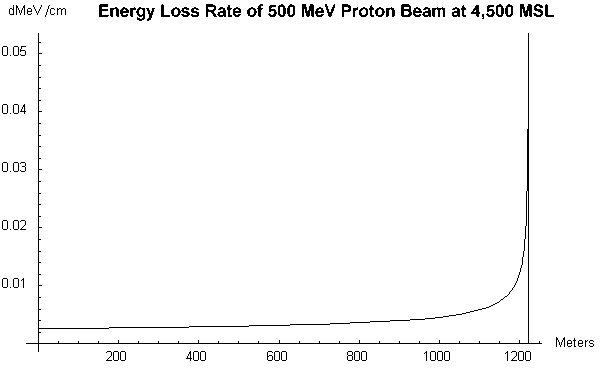February, 2019
Since I posted my look back at the Lazar story from 2018, I received a bit of skeptical feedback as to what was observed over Groom being the testing of a proton beam. Oh you doubters! However it’s completely understandable, for the average person, who might not have the ability to crunch the numbers to verify the math in my original 20 year old (!!) posting regarding it being a proton beam. The Bethe equation, used to predict the distance charged particles will travel in a target, is damn imposing and not exactly user friendly. But what if there were a way that (almost) anybody could model a proton beam through air and see if my “theory” was correct (“Theory” is in quotes because my knowledge base includes a lot more info than I’m going to publicly disclose).
Ladies and gentlemen, allow me to introduce you to SRIM, “The Stopping and Range of Ions in Matter”. It’s a bit of software, written by real particle physicists, that, among other things, is used to determine the penetration depth of charged particles into targets. It’s available for free download from this website . Yeah, I know….the website looks like a throwback to the 1990s, but the software works and the price is right.
Now before you run off to download and install the SRIM software, I need to give you a heads up about something. Unless you are reasonably conversant with college level physics you may find it challenging to input the proper parameters for modeling (As an aside, I wonder why someone conversant with college level physics would buy Lazar’s story in the first place, but I guess I’ve seen weirder shit). To that end, I’ve included screen grabs below showing my input parameters and the resulting output below it. In the output screen the important input parameters are in light blue and the good stuff is circled in green.


Of particular note are the values given in the “Ion Stats” boxes. The “Straggle” and “Lateral Proj.” values strongly suggest the resultant area of ionization would be circular, as seen from below, and oval, as seen from the side. You know, like a “Sport Model”! SRIM shows a 500 MeV proton beam making it 1.22 kilometers through the atmosphere at the elevation of Groom Lake before exploding in saucer-like goodness.
Now compare this to the original analysis I did 20 years ago in terms of penetration. I’d say it was reasonably close:

So, knowing only this bit of particle physics analysis, does it seem possible what was observed on Wednesday nights in the late 1980s was proton beam testing? And of the two “theories”, saucers from a hidden base at Papoose Lake or a proton beam from Groom Lake, which seems more plausible?
Oh, and before you make up your mind in regards to this,…ummm…theory, you might want to take a gander at one last thing….
On the SRIM main menu there’s a button that will bring up “TRIM Calculation”. Press it. In the resulting “TRIM Setup” window, in the upper left you’ll see a button labeled “TRIM Demo”. Now press that. This will bring up 12 sample demos you can run to see how this all works. Now notice the sample demo offered in the lower right corner? Yeah, you’re seeing right…a particle beam being used only partially facetiously as a “death ray”. It models a 10 GeV (1 billion electron volt) beam passing through air.

Selecting this demo loads the following inputs:

And when run, you get the following output (I’ll leave it to you to play around with the available output displays):

Yep, a “death ray” with a range of just over 40 kilometers. Granted, 10 GeV is a shit load of energy (20 times the energy I assumed for the Groom proton beams), but it’s the general concept carried to extremes. I’ve never known precisely what the boys at Groom were trying to achieve with their ersatz saucers. My assumption was that it was some sort of radar spoofing effort. But hell, maybe it WAS an attempt to make a death ray. All things considered, I think I’d rather it be secret saucers from Papoose Lake. But unfortunately it’s not.